Fundamentals: Chris Paul's formula

The point guard position is a role of satiation. Those who initiate offense dictate, to a certain degree, who gets to shoot, when, and how much. Such power is exercised in selective playmaking and checked in micro-frustrations: a big man might hang his head after going unrewarded on a hard roll or a shooter's body language may turn cold after his opening vanishes. So often basketball games are won or lost in this dynamic, if simply because players are human beings who yearn to be involved.
Whichever player controls the offense must balance those wants against whatever is best for the team. This gets especially tricky when the point guard himself is also a team's best option for scoring – a scenario that calls for a more deliberate counterbalance. Denver's Ty Lawson riffed on this subject earlier this season in a discussion with Sports Illustrated's Chris Mannix:
"I want to get people involved early first quarter. I want to try to get seven or eight assists early, then in the second or third quarter get myself going. Last year I thought I was getting myself going too early for us to win games. I also notice that [Chris Paul] does that a lot. He will get Blake [Griffin] and DeAndre Jordan going early. It works."
That it does. Paul is a takeover player, much more willing to push his own scoring in the fourth quarter than the first. In doing so he still maintains a high level of involvement in the offense throughout – the progression of the game simply brings about a shift in his priorities. Here are Paul's assists and shot attempts per minute, tracked quarter to quarter. Note the clear trend:
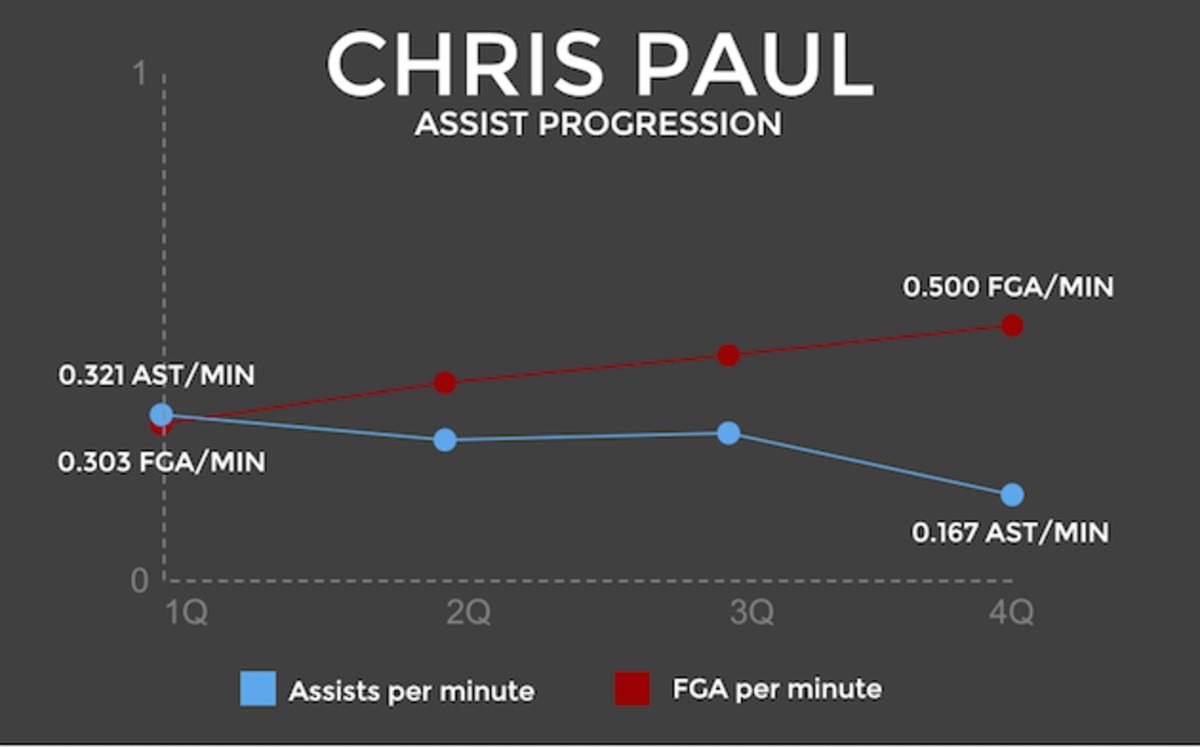
Paul is a rare bird, though. Few guards in the league can manufacture a shot so easily in a half-court setting, and even fewer can see the floor so fully as to maximize their early-game distribution. That Paul's game exists in almost perfect balance of those axes lends itself to this kind of approach. When you're as good as Paul, sometimes the game really is as simple as deciding what to do when.
• MORE NBA: Midseason awards | Grading all 30 teams | All-Star coverage
Lawson, though, actually ranks as one of Paul’s closer contemporaries in terms of executing this formula:
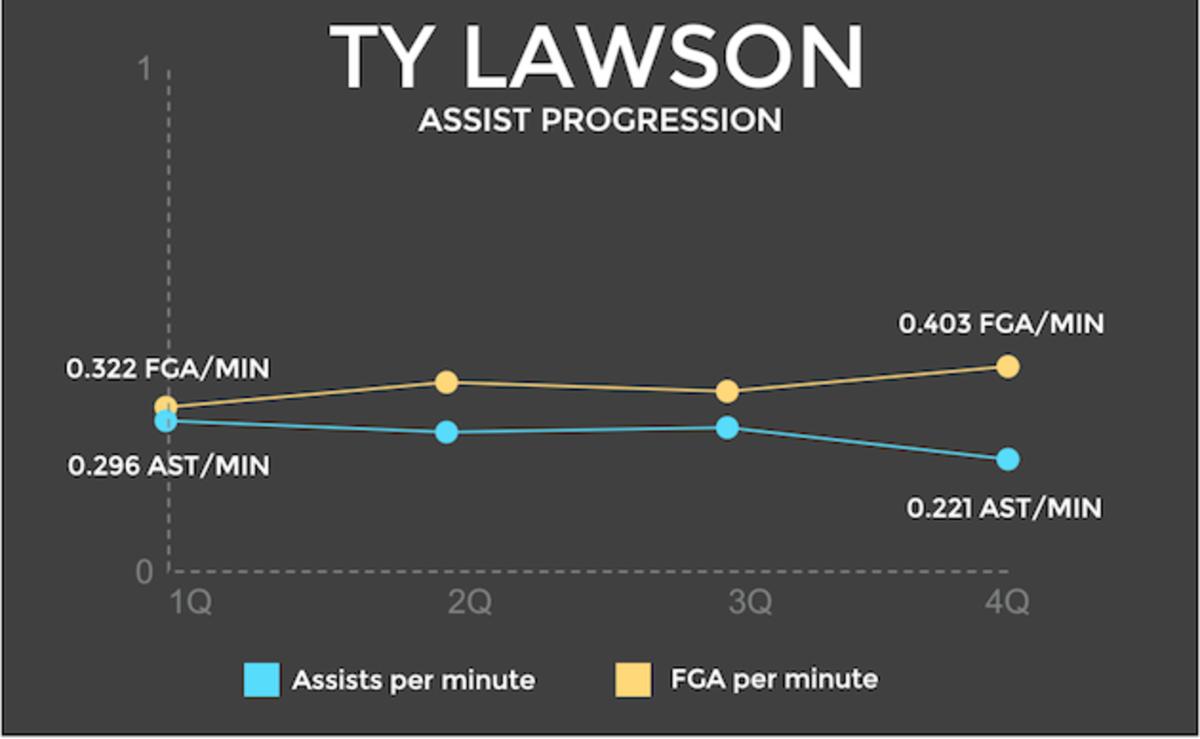
Lawson’s progression is clearly a bit more restrained throughout. At no point does he fire off like Paul does in the fourth, preferring instead to keep within a sensible range of both scoring and assisting. All kinds of factors help shape the figures in play here, including coaching preferences, lineup constructions, and overall teammate quality (particularly when looking at assists, which must be completed to register). Yet the inferences that can be drawn from this basic data corroborate what we see from both Paul and Lawson: Paul focuses more on breaking down his man and getting to his spots in the fourth than at any other point in the game; Lawson, while making a concerted effort to score more late, still operates within a less extreme range in part as a function of his not being able to free himself as masterfully as Paul can.
SI.com's 2015 NBA All-Star coverage
Yet as we zoom out to parse the quarter-to-quarter performance of primary ball handlers around the league, we find no other particularly dedicated disciples to Paul’s formula. Most tend to shoot slightly more as the game goes on (notable exceptions: Ricky Rubio, Darren Collison, Tony Parker, Eric Bledsoe) or assist slightly less (exceptions: Rubio, Jeff Teague, Jrue Holiday). By and large, though, they progress in fluctuations rather than trends. There can be no mistaking Paul’s intentions. Those of Stephen Curry or John Wall, however, aren’t so clearly defined.
Of those that border on being Paul formula players, three stand out. Toronto’s Kyle Lowry:
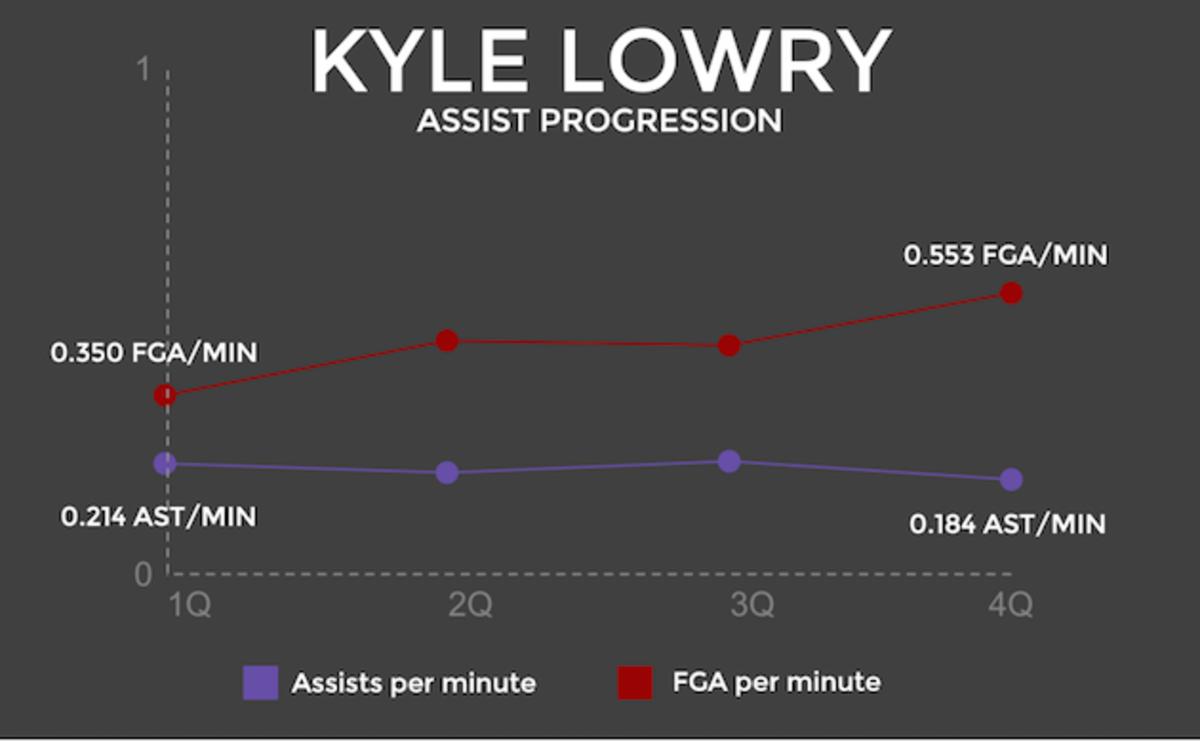
Portland’s Damian Lillard:
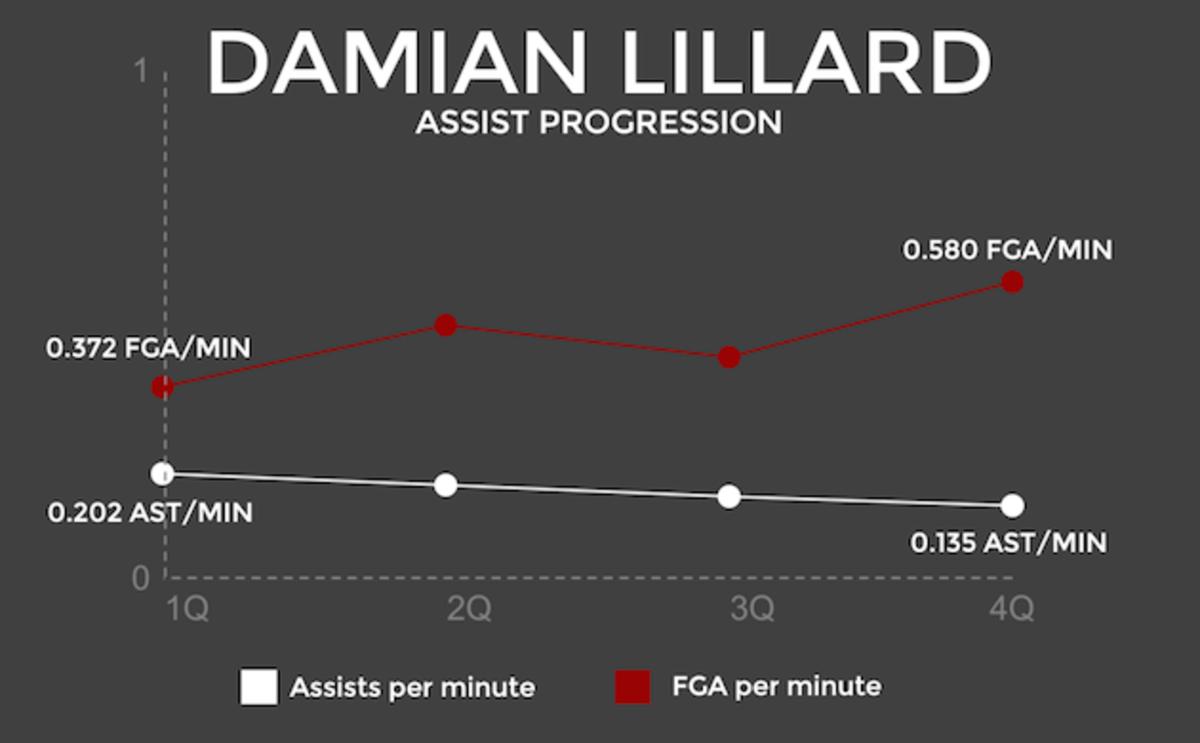
And Charlotte’s Kemba Walker:
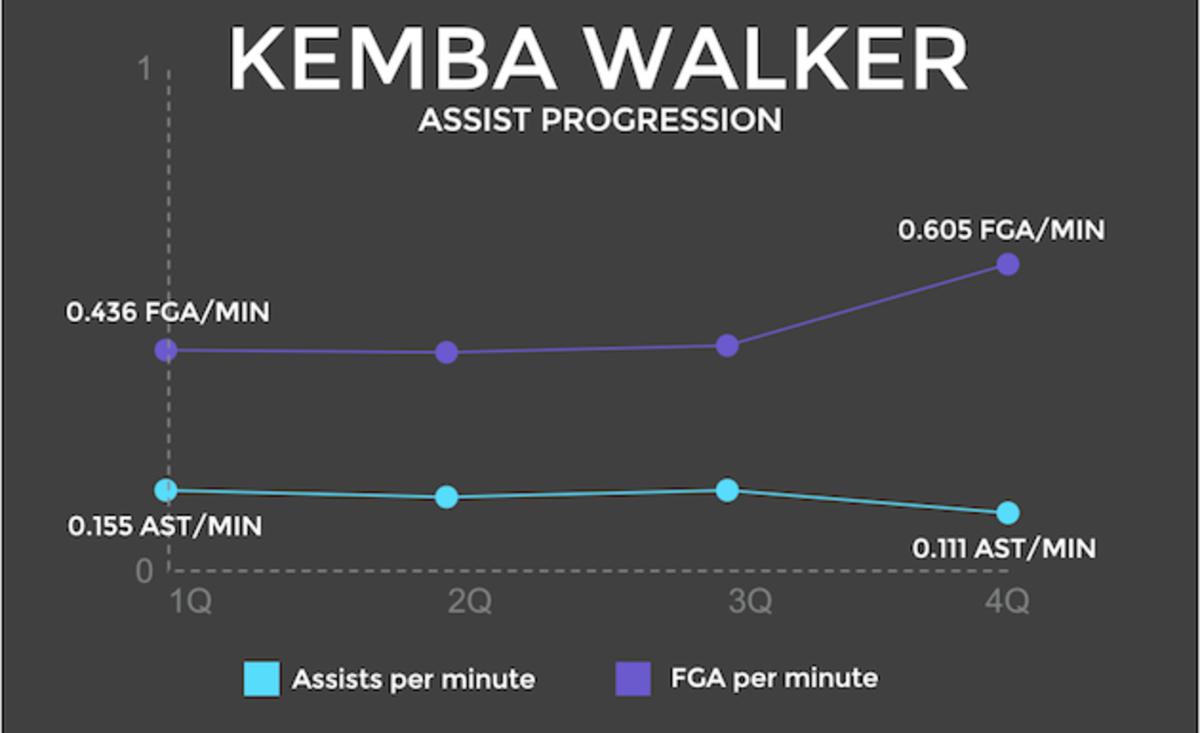
All three lead guards share in Paul’s takeover tendency, as is borne out in their rampant ascent in fourth-quarter shot attempts. Walker, in particular, chucks at a rate equivalent to 21.5 attempts per 36 minutes while playing for one of the slower teams in the league. He does so in some sense out of necessity, though also by reputation; Walker has made a career out of being able to close games and work his way out of tight spots. That he would go into the fourth with guns blazing should not be cause for even faint surprise.
Shot-clock stars: Players who thrive when time is winding down
The same could be said of Lowry and Lillard, both of whom rate among the best fourth-quarter scorers in the league. Neither is much encumbered by the presence of other high-usage teammates; DeMar DeRozan and LaMarcus Aldrige, respectively, tend to fall to second options in the final frame. That kind of contextual similarity brings them closer in approach to Paul than some others (including Walker), for what matters most in the formula is the elective push to get others involved early and play for one’s own offense late.
Where Lillard and Lowry veer from the model, naturally, is in the assists. Neither is as prolific a playmaker as Paul, and over the course of the game we see that their per-minute assists dip only slightly. Paul begins shooting and assisting in almost equal measure as prelude to a dramatic late-game change. Lillard and Lowry begin with clear disparity and exaggerate that difference by shooting more and more or less sustaining their assist numbers.
That distinction is important, as it’s what makes Paul’s in-game evolution so dramatic and effective. Only two teams in the league have scored as efficiently in fourth quarters as the Clippers. Building around players as talented as Paul and Blake Griffin has more than a little to do with that, but L.A. also paces and manages its offense in a way that plays to both game flow and good chemistry. Touches are balanced. Shots are scheduled. Then, when the game tightens and the defense intensifies, there’s little doubt of with whom control rests.
